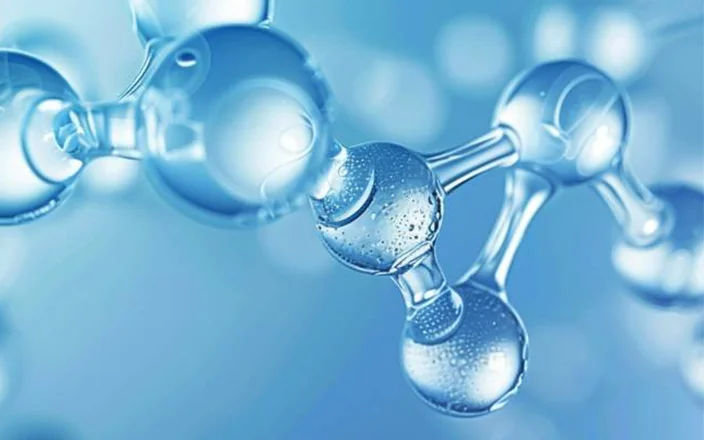Liquid chromatography-mass spectrometry (LC-MS), as a key platform in bioanalysis, can quantify analyte concentration in complex biological matrices. However, the accuracy and precision of reported concentrations are often impacted by analyte losses and experimental variations during sample preparation and analysis. The internal standard (IS) plays a critical role in ensuring reliable and reproducible results. This article explores key considerations for IS implementation in LC-MS workflows, including IS selection, addition timing, concentration determination, and abnormal response evaluation.
What is an Internal Standard?
An internal standard (IS) is a known quantity of a reference compound added to biological samples to account for variability introduced during sample preparation, chromatographic separation, and mass spectrometric detection. By tracking the IS response relative to the analyte, researchers can normalize fluctuations caused by [1-2]:
Sample Preparation: Analyte loss may occur during steps such as dilution, extraction, and reconstitution due to incomplete transfer or adsorption.
Chromatographic Separation: Non-target components may compete with the analyte for adsorption sites on the chromatographic column, leading to peak tailing, poor peak shape, etc.
Mass Spectrometric Detection: Co-eluting substances may suppress or enhance analyte ionization efficiency, known as the matrix effect.
To correct for these losses and signal fluctuations, an internal standard is added in equal amounts to all samples in a batch. The analyte-to-IS response ratio is then used for quantification, significantly improving accuracy, precision, and method reliability.

Figure 1. LC-MS Analysis of Biological Samples.
Which Internal Standard Should We Choose?
In LC-MS bioanalysis, two primary types of internal standards are used: stable isotope-labeled internal standard (SIL-IS) and structural analogue internal standard.
SIL-IS is a compound in which one or several atoms in the analyte are replaced by stable isotopes (e.g., 2H, 13C, 15N, or 17O). SIL-IS has nearly identical chemical and physical properties to the target analyte [3], ensuring consistent extraction recovery during sample preparation. In MS detection, the degree of ionization suppression or enhancement caused by the co-eluting matrix components is the same for the SIL-IS and analyte, even under severe matrix effects. Based on these excellent tracking capabilities, SIL-IS is widely preferred in LC-MS.
Key considerations for SIL-IS:
To minimize mass spectrometric cross-talk, the SIL-IS should ideally have a mass difference of 4–5 Da from the analyte.
2H-labeled internal standard may undergo deuterium-hydrogen exchange [4], and increased deuteration can cause slight retention time shifts, leading to differential matrix effects [5]. 13C, 15N, or 17O-labeled IS are preferred.
Internal standard purity must be verified to avoid interference with the analyte.
Structural analogue internal standard helps mitigate experimental variability during sample preparation and analysis. These internal standards exhibit chemical and physical similarities to the target analyte, particularly in terms of hydrophobicity (logD) and ionization properties (pKa). Compounds with the same critical functional groups (e.g., -COOH, -SO2, -NH2, halogens, or heteroatoms) are ideal, as they minimize differences in extraction recovery and ionization efficiency [6].
When to Add an Internal Standard?
Internal standard can be added at three stages: pre-extraction, post-extraction (pre-chromatographic separation), or post-chromatographic separation [7]. The optimal timing depends on the analyte type and extraction method:
Pre-Extraction: For liquid-liquid extraction (LLE) or solid-phase extraction (SPE), an internal standard is typically added before introducing buffers or organic solvents.
Post-Extraction (Pre-chromatographic separation): In assays requiring simultaneous detection of free and encapsulated forms (e.g., liposomes), early IS addition may induce conversion between forms. Thus, an internal standard is added post-SPE.
Post-Chromatographic Separation: For multi-component analyses involving complex preparation steps (e.g., extraction, purification), the internal standard may be introduced via post-column infusion to ensure uniform detection conditions.
For simple sample preparation processes (e.g., protein precipitation), internal standard addition is flexible (e.g., added with the precipitant). For complex sample preparation processes (e.g., antibody-drug conjugate (ADC) quantification via surrogate peptides), the internal standard should be added early (e.g., before immunocapture) to track analyte behavior throughout the process.
How to Set Internal Standard Concentration?
The appropriate concentration of the internal standard is crucial for the accuracy of the data results. Simply adding equal amounts of internal standard to all samples does not guarantee analytical accuracy. As shown in Figure 2, when the analyte has a cross-signal contribution to the internal standard, calibration curves become increasingly nonlinear as the IS concentration decreases. Currently, there is no clear-cut guideline regarding IS concentration, and several factors must be considered, including cross-interference between the internal standard and analyte, mass spectrometric sensitivity, and matrix effects.

Figure 2. Calibration Curve Relationships with Different Internal Standard Concentrations [9].
Cross-Interference Between Internal Standard and Analyte
Cross-interference occurs when the internal standard and analyte affect each other’s signals. According to ICH M10 guidelines [10], acceptable thresholds include:
Equal to or less than 20% of the lower limit of quantification (LLOQ) for IS-to-analyte contributions.
Equal to or less than 5% of the IS response for analyte-to-IS contributions.
Based on these criteria, the minimum (CIS-min) and maximum (CIS-max) IS concentrations can be calculated (Table 1).
Table 1. Formula for estimating the concentration of the internal standard.
| CIS-min=m×ULOQ/5 |
| CIS-max=20×LLOQ/n |
ULOQ represents the upper limit of quantification.
m and n represent the percentages of cross-signal contributions from analyte-to-IS and IS-to-analyte
Mass Spectrometric Detection Sensitivity
When the internal standard sensitivity is relatively high, its concentration can be lowered. Otherwise, high IS concentration should be used to achieve adequate signal to-noise ratio (S/N) to reduce the impact of random detection noise in IS response. Additionally, the response difference between IS and analyte should not be too large, as this could affect the reliability of linear regression results.
Matrix Effects of Ion Suppression or Enhancement
If matrix effects are present, it is best to use a stable isotope-labeled internal standard. The greater the overlap between the chromatographic peaks of the internal standard and the analyte, the better the matrix effects can be compensated. Since the concentration of the analyte varies while the concentration of the internal standard remains constant, it is typically matched in the range of 1/3 to 1/2 of the ULOQ concentration. This range is expected to encompass the average peak concentration (Cmax) of most drugs and metabolites; therefore, it is recommended that the signal response of the internal standard be approximately 1/3 or 1/2 of the ULOQ of the analyte[11].
Solubility of the Internal Standard and SPE Plate Capacity
The concentration of the internal standard should not be excessively high to avoid solubility issues or exceeding the capacity of the SPE plate, which could hinder the effective retention of both the analyte and internal standard, ultimately reducing extraction recovery. In addition, the concentration of the internal standard should be set considering the features of the compounds being analyzed, particularly in new modalities, such as peptides, which often encounter adsorption issues leading to low extraction recoveries and significant carryover. When determining the appropriate concentration of the internal standard, it is also essential to consider potential interactions with the container surfaces or possible adsorption sites in the LC-MS system due to similar properties. In such cases, using a higher concentration of the internal standard can effectively reduce or prevent the absorption of the analyte.
Internal Standard Abnormal Response Evaluation
The use of internal standards can effectively track analyte behavior throughout the process. Any variability during the experiment will also be reflected in the internal standard response, providing insights into the experimental conditions. Significant variations in internal standard response may impact the accuracy of quantitative results. While regulations do not explicitly define “internal standard response variability”, it is common practice to compare the internal standard response of unknown samples with the average responses from calibration standards (CS) and quality control samples (QC). Responses that fall outside a pre-established acceptable range often indicate that the method requires further optimization. There are typically two types of anomalies:
Individual Anomalies: Anomalous internal standard responses in individual samples may arise from random variations during the addition, extraction, or injection of the internal standard, such as failure to add or accidental double addition (see Figure 3). In such cases, the accuracy of the affected sample data is often compromised, usually due to human error. Visual checks can help ensure consistent volumes across each sample well.

Figure 3. Individual Anomalies in IS Response [12].
Systematic Anomalies: Systematic anomalies may arise from issues with the system itself, such as errors with the injector, liquid phase, or mass spectrometer. These can be assessed by inspecting the instrument, observing chromatographic behavior such as retention time variations, signal interference, or abnormal chromatographic peaks. For example, during injection, the autosampler needle must pierce the caps or covers to load samples. Any debris generated can partially or completely block the needle, leading to either no sample or inconsistent, low volumes of sample being injected. As a result, either no response or reduced internal standard (IS) responses will be observed (see Figure 4). Generally, the accuracy of quantitation is unaffected unless the response fails to meet S/N requirements due to extremely low injection volume.

Figure 4. Systematic Anomalies in IS Response [12].
Determining whether internal standard anomalies affect data accuracy cannot be simply answered with a “yes” or “no.” Once an anomaly occurs, it is essential to investigate the root cause and evaluate the reliability of data and the necessity of reanalysis or repreparation..
Case Studies
Case 1: When conducting cytochrome P450 enzyme (CYP) inhibition experiments, the simultaneous presence of substrate, metabolites, standard inhibitors, and various types of candidate compounds in a single sample requires extensive time for chromatographic separation to ensure the accuracy of target metabolite detection.. For the seven common CYP enzyme subtypes (CYP1A2, CYP2C8, CYP2D6, CYP2B6, CYP2C19, CYP3A, CYP2C9), we evaluated and selected seven corresponding SIL-ISs (see Figure 5). These internal standards effectively track changes in target metabolites and eliminate the need for additional chromatographic separation.

Figure 5. LC-MS Chromatograms of Corresponding SIL-IS in 7 in 1 CYP Inhibition Assay.
Case 2: In the ADME screening stage, considering the large number and diversity of compounds, as well as the automation of sample preparation, we developed multiple universal internal standards (see Figure 6). These standards ensure the accuracy of detecting analytes ranging from weakly polar to strongly polar, and from acidic to basic, under different sample preparation and analysis conditions.

Figure 6. Typical LC-MS Chromatograms of Universal Internal Standards.
Concluding Remarks
Internal standards are essential for correcting analyte loss and signal variability in LC-MS bioanalysis. WuXi AppTec DMPK team handles millions of samples annually and deals with a wide variety of complex molecules. We have accumulated extensive experience in quantifying drug concentrations in biological matrices using an internal standard. The types of molecules we work with include, but are not limited to, small molecules, biomarkers, peptides, oligonucleotides, and antibody-drug conjugates (ADCs). When selecting internal standards, we can use both SIL-IS and a structural analogue internal standard. Given the high sample throughput and short development cycles in early drug research, we can also employ universal internal standards to track and correct for deviations of the analytes during sample preparation and analysis. This flexible internal standard strategy significantly enhances the efficiency of sample processing and accelerates drug development timelines.
Authors: Minxia Li, Xinxin Wen, Chunli Zhu, Xiaotong Li, Lili Xing
Talk to a WuXi AppTec expert today to get the support you need to achieve your drug development goals.
Committed to accelerating drug discovery and development, we offer a full range of discovery screening, preclinical development, clinical drug metabolism, and pharmacokinetic (DMPK) platforms and services. With research facilities in the United States (New Jersey) and China (Shanghai, Suzhou, Nanjing, and Nantong), 1,000+ scientists, and over fifteen years of experience in Investigational New Drug (IND) application, our DMPK team at WuXi AppTec are serving 1,600+ global clients, and have successfully supported 1,700+ IND applications.
Reference
[1] Wenkui Li, Jie Zhang, Francis L.S.TSE. Handbook of LC-MS bioanalysis: best practices, experimental protocols, and regulations, 2013.
[2] Wieling Jaap. LC-MS-MS Experiences with internal standards. Chromatographia Supplement. 55(2002) S107-S113.
[3] Wilfried M.A. Niessen, Paolo Manini, Roberto Andreoli. Matrix effects in quantitative pesticide analysis using liquid chromatography mass spectrometry. Mass Spectrometry Reviews. 25 (2006) 881-899.
[4] Thomas Berg, Dag Helge Strand. 13C labelled internal standards-A solution to minimize ion suppression effects in liquid chromatography–tandem mass spectrometry analysis of drugs in biological samples. Journal of Chromatography A. 1218(2011) 9366-9374.
[5] Sherry Wang, Matthew Cyronak, Eric Yang. Does a stable isotopically labeled internal standard always correct analyte response? A matrix effect study on an LC/MS/MS method for the determination of carvedilol enantiomers in human plasma. Journal of Pharmaceutical and Biomedical Analysis, 43 (2007) 701-707.
[6] Ellen Stokvis, Hilde Rosing and Jos H, Beijnen. Stable isotopically labeled internal standards in quantitative bioanalysis using liquid chromatography mass spectrometry: necessity or not? Rapid Communications In Mass Spectrometry. 19 (2005) 401-407.
[7] Aimin Tan, Nadine Boudreau, Ann Lévesque. Internal standards for quantitative LC-MS bioanalysis. LC-MS in Drug Bioanalysis. Springer, 2012.
[8] Anne-Charlotte Dubbelman, Bo van Wieringen, Lesley Roman Arias, Michael van Vliet, Roel Vermeulen, Amy C Harms, Thomas Hankemeier. Strategies for using postcolumn infusion of standards to correct for matrix effect in LC-MS-based quantitative metabolomics. Journal Of The American Society For Mass Spectrometry. 35(2024) 3286-3295.
[9] Aimin Tan, Isabelle A. Lévesque, Isabelle M. Lévesque, Franc¸ ois Viel, Nadine Boudreau, Ann Lévesque. Analyte and internal standard cross signal contributions and their impact on quantitation in LC–MS–based bioanalysis. Journal of Chromatography B. 879 (2011) 1954-1960.
[10]International Council for Harmonisation (ICH) M10: Bioanalytical method validation and study sample analysis, 2022.
[11]Hongwei Liang, Rodger L. Foltz, Min Meng, Patrick K. Bennett. Ionization enhancement in atmospheric pressure chemical ionization and suppression in electrospray ionization between target drugs and stable-isotope labeled internal standards in quantitative liquid chromatography tandem mass spectrometry. Rapid Communications In Mass Spectrometry. 17(2003) 2815-2821.
[12] Aimin Tan, Saleh Hussain, Adrien Musuku, Robert Massé. Internal standard response variations during incurred sample analysis by LC–MS/MS: Case by case troubleshooting. Journal of Chromatography B, 877 (2009) 3201-3209.
Stay Connected
Keep up with the latest news and insights.











